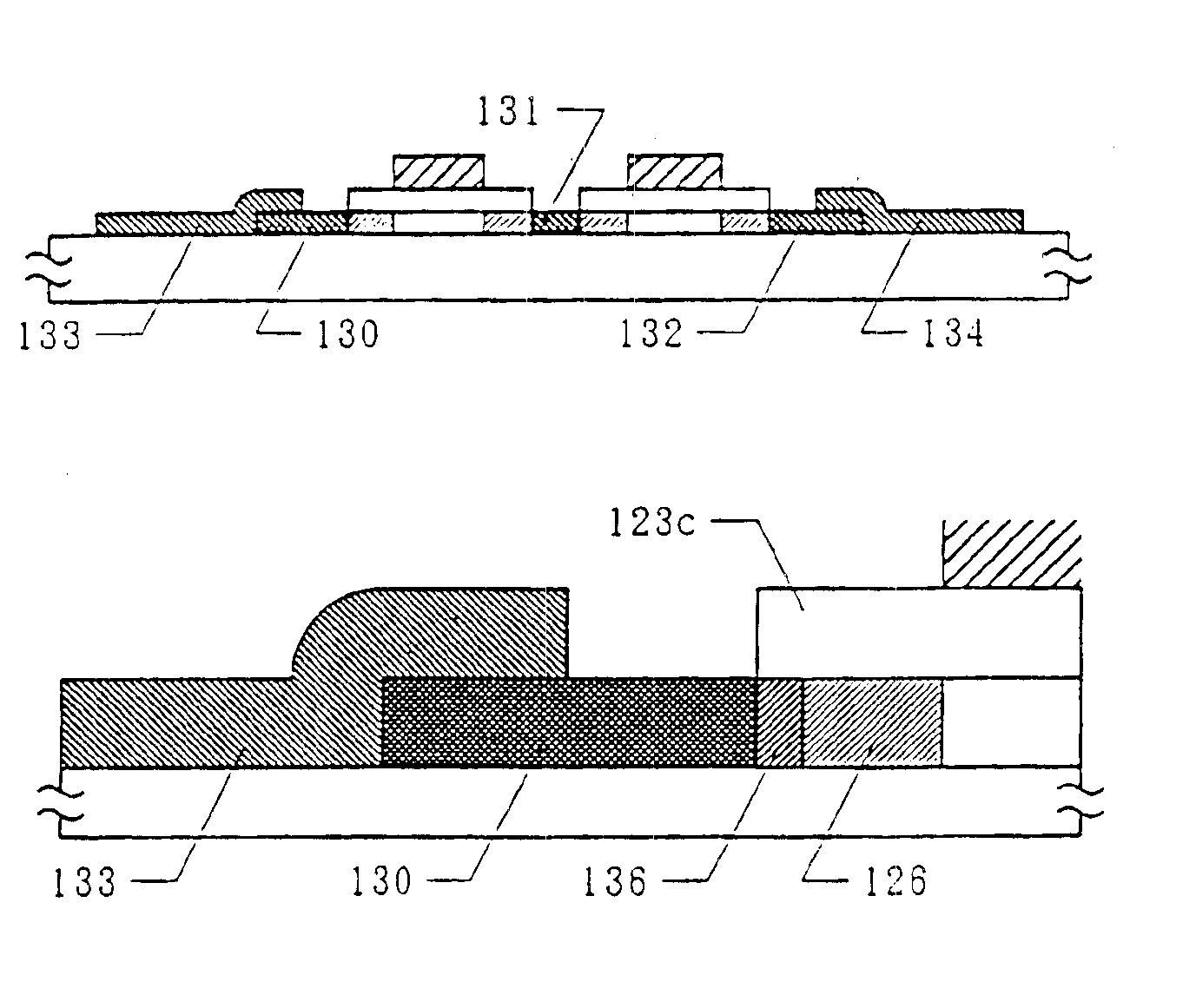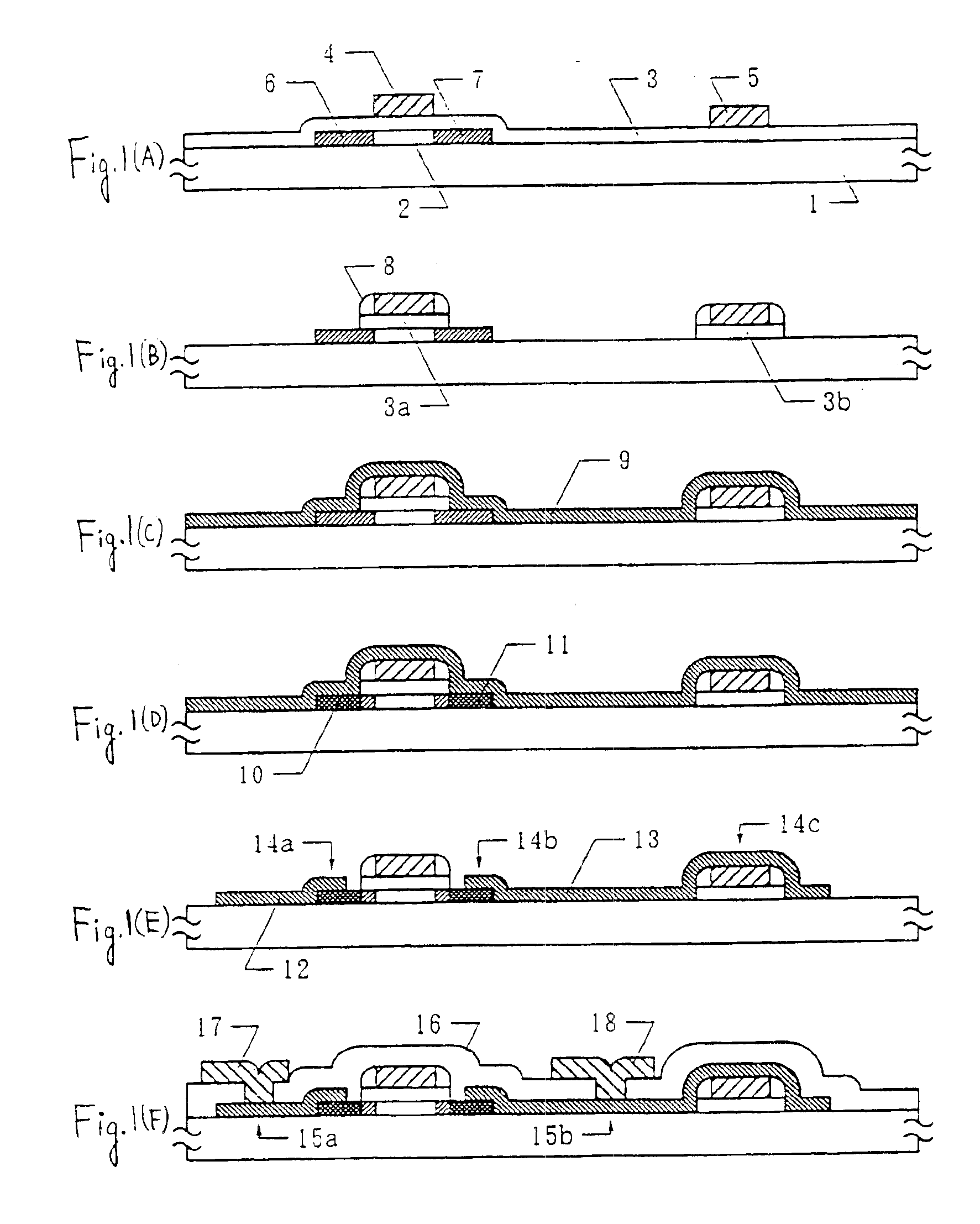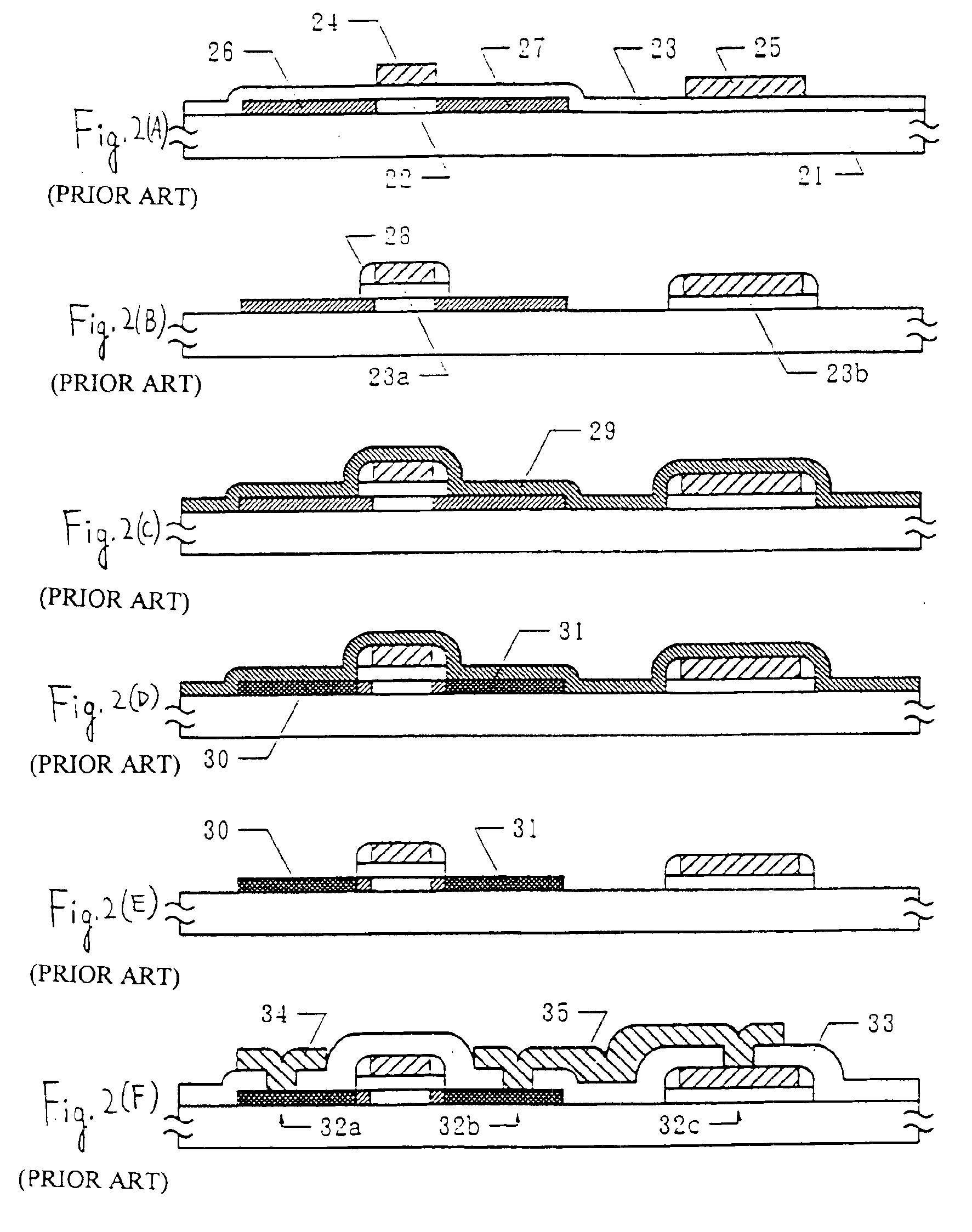Semiconductor device that include silicide layers
a technology of silicide layer and semiconductor, applied in the direction of semiconductor devices, semiconductor/solid-state device details, electrical equipment, etc., can solve the problems of high probability of overetching, difficult to form contacts on semiconductor thin films, and difficult to form contacts, so as to prevent defective contacts, reduce the total concentration of defects, and reduce the concentration of defects
- Summary
- Abstract
- Description
- Claims
- Application Information
AI Technical Summary
Benefits of technology
Problems solved by technology
Method used
Image
Examples
embodiment 1
[0039]FIGS. 1(A)-1(F) schematically illustrate a process sequence for fabricating TFTs in accordance with the present embodiment. Although these are n-channel TFTs, it is obvious that p-channel TFTs can be manufactured also by forming the source / drain regions out of a p-type semiconductor. The TFTs in accordance with the present embodiment can be disposed at pixels of liquid crystal displays, used in peripheral circuits, in image sensors, and in other integrated circuits.
[0040]In the present embodiment, a substrate 1 is made of a glass substrate coated with a silicon oxide film (not shown) having a thickness of 2000 Å. The coating can be made by sputtering or plasma-assisted CVD (PCVD). Then, an amorphous silicon film is formed to a thickness of 500 Å by PCVD. The method of forming this amorphous silicon film and its film thickness are determined according to the manner in which the present invention is practiced, and no limitations are imposed on them. Also, a crystalline silicon f...
embodiment 2
[0055]FIGS. 3(A)-3(F) schematically illustrate a process sequence for fabricating TFTs in accordance with the present invention. What are fabricated in the present embodiment are n-channel TFTs, but it is obvious that p-channel TFTs can be manufactured by forming the source / drain regions out of a p-type semiconductor. The TFTs in accordance with the present embodiment can be disposed at pixels of liquid crystal displays, used in peripheral circuits, in image sensors, and in other integrated circuits.
[0056]In the present embodiment, a substrate 41 is made of a glass substrate coated with a silicon oxide film (not shown) having a thickness of 2000 Å. Islands of a crystalline silicon film (active layer) 42 are formed on the substrate. A silicon oxide film 43 becoming a gate insulator layer is formed to a thickness of 1200 Å over the crystalline silicon film. Then, a gate electrode 44 and a gate interconnect 45 are formed out of a polycrystalline phosphorus-doped silicon film. Phosphoru...
embodiment 3
[0062]FIGS. 4(A)-4(F) schematically illustrate a process sequence for fabricating TFTs in accordance with the present embodiment. In this embodiment, a substrate 61 is made of a glass substrate coated with a silicon oxide film (not shown) having a thickness of 2000 Å. Islands of a crystalline silicon film (active layer) 62 are formed on the substrate. A silicon oxide film 63 becoming a gate insulator layer is formed to a thickness of 1200 Å over the crystalline silicon film. Then, a gate electrode 64 and a gate interconnect 65 are formed out of a polycrystalline phosphorus-doped silicon film. Phosphorus ions are implanted as dopants into the active layer 62 to impart the n-type conductivity. During this process step, the gate electrode 64 acts as a mask, and doped regions 66 and 67 are formed in a self-aligned manner but with a low dopant concentration of 1×1017 to 1019 atoms / cm3 (FIG. 4(A)).
[0063]In the same way as in Embodiment 1, sidewalls 68 are formed on the sidewalls of the ga...
PUM
 Login to View More
Login to View More Abstract
Description
Claims
Application Information
 Login to View More
Login to View More - R&D
- Intellectual Property
- Life Sciences
- Materials
- Tech Scout
- Unparalleled Data Quality
- Higher Quality Content
- 60% Fewer Hallucinations
Browse by: Latest US Patents, China's latest patents, Technical Efficacy Thesaurus, Application Domain, Technology Topic, Popular Technical Reports.
© 2025 PatSnap. All rights reserved.Legal|Privacy policy|Modern Slavery Act Transparency Statement|Sitemap|About US| Contact US: help@patsnap.com



